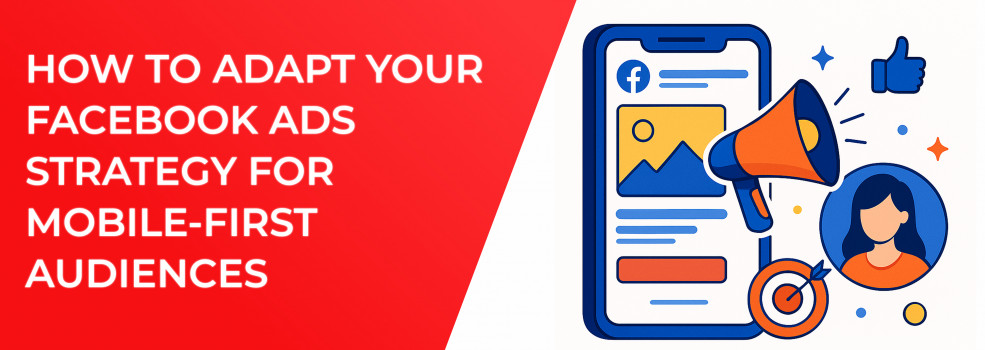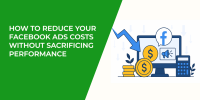Mobile is no longer a side channel; it is where almost every scroll, tap, and purchase happens. More than 90 percent of Facebook sessions now start and finish on a phone, and the majority are vertical-only. If your ads were built for desktop banners, they probably waste budget, under-deliver, and feel awkward on a six-inch screen. The following guide blends firsthand experience with Facebook advertising best practices and plenty of Facebook ad optimization techniques, drawing from real Facebook ad performance data. Work through it step by step and you can retrofit any account for a mobile world without ripping up your existing structure.
Before each checklist you will find a short explainer to set the scene, and after every list or table you will see extra guidance on what to do next. That context helps you connect the dots instead of blindly following bullet points.
1. Run a Reality Check on Your Mobile Metrics
Start by measuring what matters. In Ads Manager switch Breakdown to Device → Mobile and pull the last thirty days. Focus on the four indicators below; together they reveal reach, engagement, cost, and conversion quality.
Export those numbers into your favourite spreadsheet and label the tab ads analysis. Two extra rows worth adding are Facebook ad frequency and Facebook ads not delivering status. Together they show whether users feel spammed or whether the auction throttles delivery. Keep this baseline; every change you make later should be measured against it.
If your dashboard is flashing an “Ad Set May Get Zero” warning, follow these quick fixes before you panic about spend.
2. Craft Creative That Stops a Thumb
Phone users decide in milliseconds whether your ad deserves attention, so creative must shout value instantly. Aim for vertical 9 : 16 video but still produce square 1 : 1 for the Feed. Put your brand or primary benefit in the first three seconds; Meta’s internal tests link early branding to a lift in Facebook ads conversion rate.
For creative specs across every placement, bookmark the Ultimate Guide to Facebook Ad Formats — it saves endless guesswork.
Checklist for high-impact assets
-
Build one master fifteen-second clip, then let Meta auto-crop for Stories, Reels, and in-stream placements
-
Add light motion (pan, zoom, animated text) that loads on 4G without stalling
Pro tip: rapid-fire visuals are easy to produce when you lean on the latest AI text and image generators for first drafts. -
Keep captions under two lines and within safe zones so no word is cut off
-
Split-test user-generated content against glossy studio footage; phone-native visuals often outperform
After each shoot rename the files with tags such as Vert-UGC-FreeShip-07-2025. Good naming discipline speeds up future ads analysis inside Power Query or Data Studio.
3. Let Automation Hunt for Cheap Mobile Impressions
Manual bid tweaks once made sense; today the auction spans Feed, Stories, Reels, Marketplace, Messenger, and more. That is too many dials for a human to twist. Lean on Meta’s machine-learning tools but feed them the right structure.
Still choosing objectives manually? See Meta Ad Campaign Objectives Explained for a quick decision tree.
-
Consolidate similar Ad Sets under Advantage Campaign Budget. The algorithm can then shift spend toward the lowest-cost mobile placements in real time.
-
Apply campaign budget optimization (sometimes called CBO campaigns) with guardrails: pause spend if CPA drifts twenty percent above target and raise daily caps when performance spikes.
-
Keep placements combined. Splitting Reels into a separate Ad Set often traps learning and triggers learning limited Facebook ads.
Use Advantage Campaign Budget to let Meta automatically shift spend toward the best-performing mobile placements.
If you still crave control, carve out ten percent of spend for an experimental campaign that runs on pure automation. Compare results weekly; most teams end up sliding more budget into the automated bucket after they trust the data.
4. Build a Friction-Free Path to Conversion
Mobile buyers abandon slowly loading pages in under three seconds. Fix that bottleneck before tweaking bids.
If clicks are cheap but sales are stuck, run through the checklist in Facebook Ads Not Converting: How to Fix It.
-
Target sub-two-second load time on a mid-tier Android phone. Tools like PageSpeed Insights can simulate 4G.
-
Replace external URLs with Instant Experience or native lead forms; they load fifteen times faster and keep the user inside Facebook.
-
Create pixel on Facebook (or better, move to Facebook Conversion tracking with the Conversions API) so post-iOS privacy updates do not break reporting.
-
Shorten checkout forms, enable autofill, and track using Facebook pixel tracking.
Re-run your baseline report after seven days. A drop in cost-per-purchase will confirm that speed work paid off.
5. Analyse, Iterate, and Keep Learning
Even the smartest algorithm needs human quality control. Block thirty minutes every Monday to open Facebook advertising analytics filtered to mobile. Look at two quick flags:
-
Rising CPM while CTR stagnates means creative fatigue — time for fresh Facebook ads tips like new hooks or colours
Spotting early wear-out is faster when you follow the tips in Ad Fatigue on Facebook: How to Spot It Early and Fix It Fast. -
Delivery problems plus “zero conversions” alerts often trace back to the Facebook ads learning phase being reset by small budget tweaks
Document each insight in a living roadmap so you never stare at an empty testing calendar.
6. Scale With Retargeting and Personalisation
Warm traffic is where profit lives. Once prospecting stabilises, launch a FB retargeting Ad Set using one-day video viewers and thirty-day clickers. Mobile buyers frequently browse twice before purchasing on the same device. Follow up with Lookalikes seeded from high-value mobile purchasers; they often add double-digit lifts to ROAS. For high-touch verticals like finance, test click-to-WhatsApp ads — fresh leads can chat before committing.
Seed Lookalikes from high-value mobile buyers to improve relevance and reduce CAC.
Not sure when to use Lookalikes versus remarketing lists? This breakdown — Custom vs Lookalike Audiences — lays out the pros and cons.
Quick-Fix Troubleshooting Cheat Sheet
-
Low impressions: widen placements and double-check for audience overlap
-
High CPM but flat CTR: rotate new creative and consult Facebook ads advice for hook ideas
-
Strong CTR yet weak CVR: review landing-page thumb UX; front-load calls to action
-
Learning limited Facebook ads: merge small Ad Sets so each gathers at least fifty conversions per week
Write each fix and outcome in your roadmap. Over twelve months that running diary becomes priceless institutional knowledge.
Wrapping Up
Adapting for mobile is not a one-time project but a mindset. It starts with acknowledging that the phone is the default screen, then applying Facebook advertising best practices like campaign budget optimization, lightning-fast pages, and disciplined creative testing. When you audit ad impressions Facebook, push budget through Advantage Campaign Budget, and obsess over Facebook advertising CPM, every mobile scroll becomes an opportunity instead of an expense. Your audience is already browsing. Meet them with content that feels native, loads instantly, and speaks their language.
Ready to pour on the spend? Read The Science of Scaling Facebook Ads Without Killing Performance before you double your budget.

